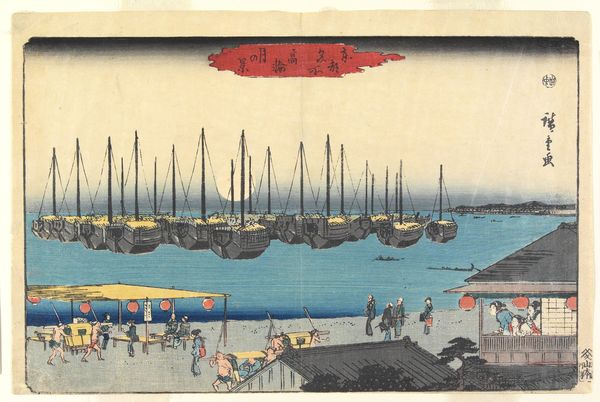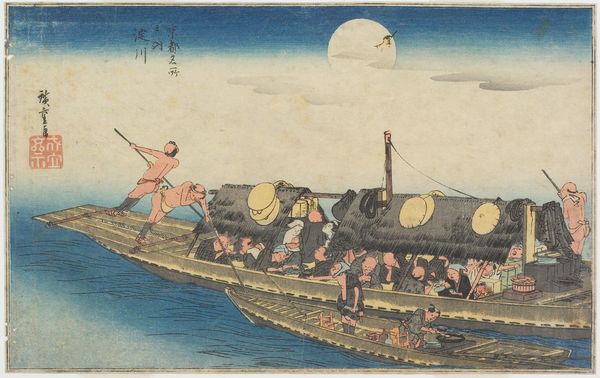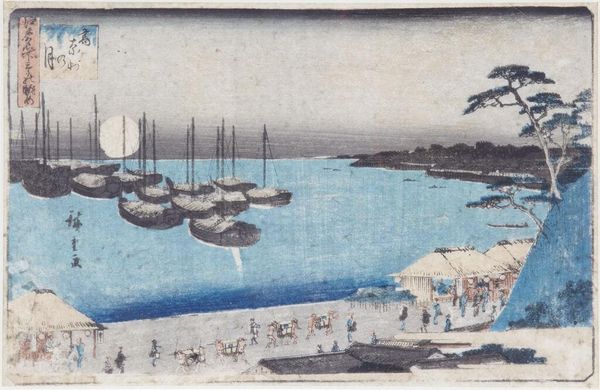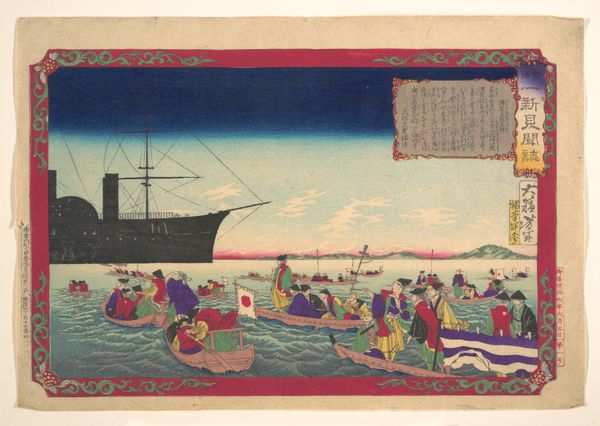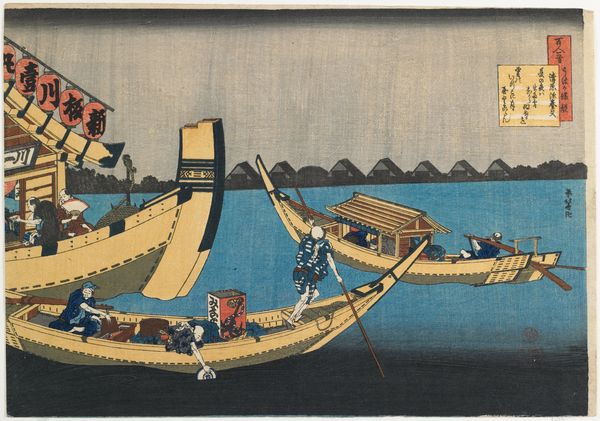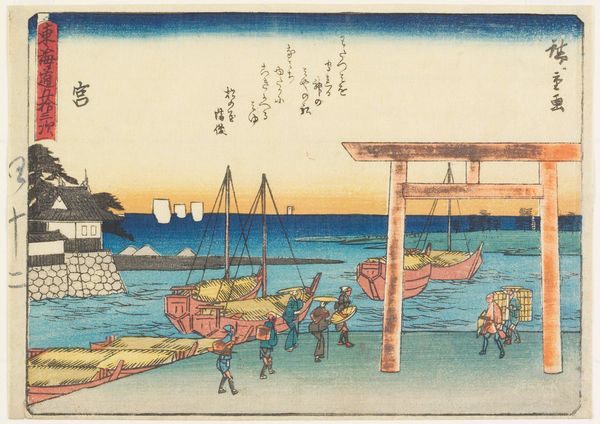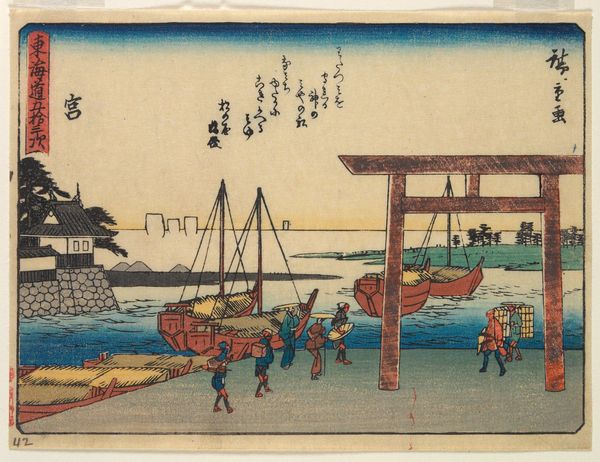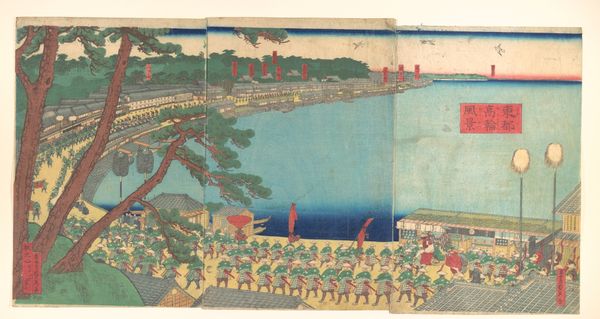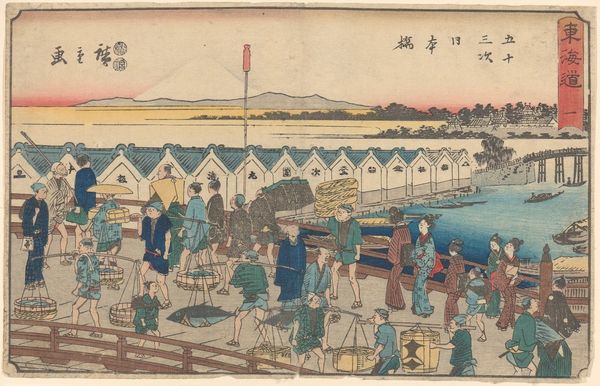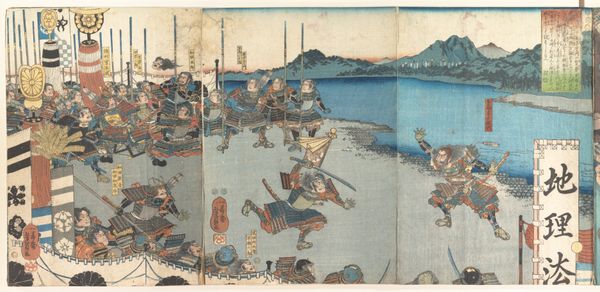
print, watercolor, woodblock-print
#
water colours
# print
#
asian-art
#
landscape
#
ukiyo-e
#
watercolor
#
coloured pencil
#
woodblock-print
#
cityscape
#
genre-painting
#
mixed media
Dimensions: height 230 mm, width 360 mm
Copyright: Rijks Museum: Open Domain
Curator: This watercolor print, "Fireworks at Ryogoku Bridge," by Utagawa Hiroshige, dating from roughly 1835 to 1840, offers us a glimpse into 19th-century Japan. Editor: It's stunning how the subtle gradations of the blue sky offset the bustle below. The bridge's geometry creates a powerful sense of depth, almost a vanishing point. Curator: Absolutely, Hiroshige’s mastery of perspective, despite working within the Ukiyo-e tradition is remarkable. The strategic placement of figures and boats really pull us into the scene. This particular print captures a fleeting moment from what became one of Edo’s great spectacles—fireworks displays that acted as an antidote to various crises, cholera outbreaks among them. Editor: The event taking place also shaped a crucial sense of identity during the Tokugawa shogunate. Can we consider this a form of manufactured catharsis through carefully organized, aestheticized events? Curator: A valid interpretation, it shows how rituals surrounding even something as ostensibly frivolous as fireworks were heavily programmed. It gives structure to collective experiences, perhaps even a carefully orchestrated public spectacle designed to ease social tensions. Editor: Precisely. But look how these darker silhouetted shapes balance the overall lighter palette of blues and muted tones. Also note that the fireworks appear to float independent from a light source. Curator: Indeed, such stylized depictions contributed to a uniquely Japanese aesthetic. Note that the event transforms the waterfront into a vibrant commercial area lined with market stalls that cater to an increasingly engaged public. These leisure activities demonstrate rising cultural confidence and the affluence within certain segments of Japanese society. Editor: It's remarkable to think how Hiroshige, through form and design, captures the spirit of that era—a world teeming with commerce, display and an ephemeral shared joy, a cultural phenomenon we can grasp even centuries later. Curator: It certainly reveals not just what things looked like but what they meant to the society and public engaging with the experience.
Comments
No comments
Be the first to comment and join the conversation on the ultimate creative platform.
